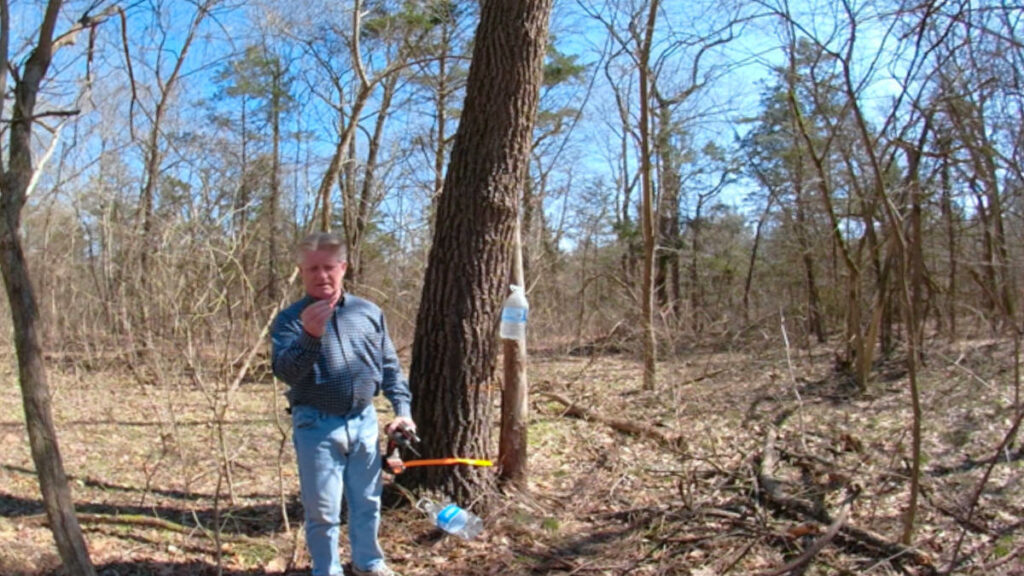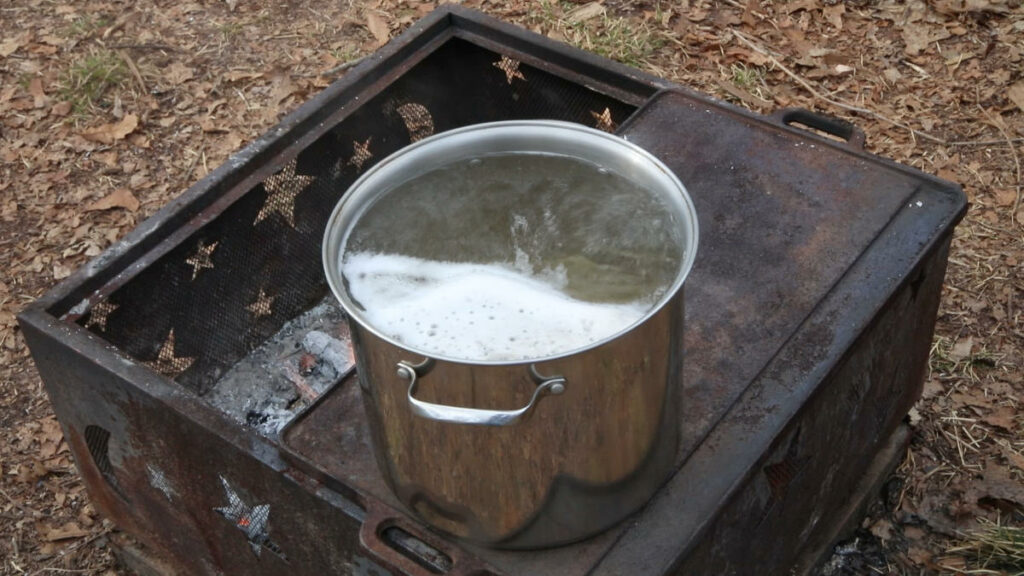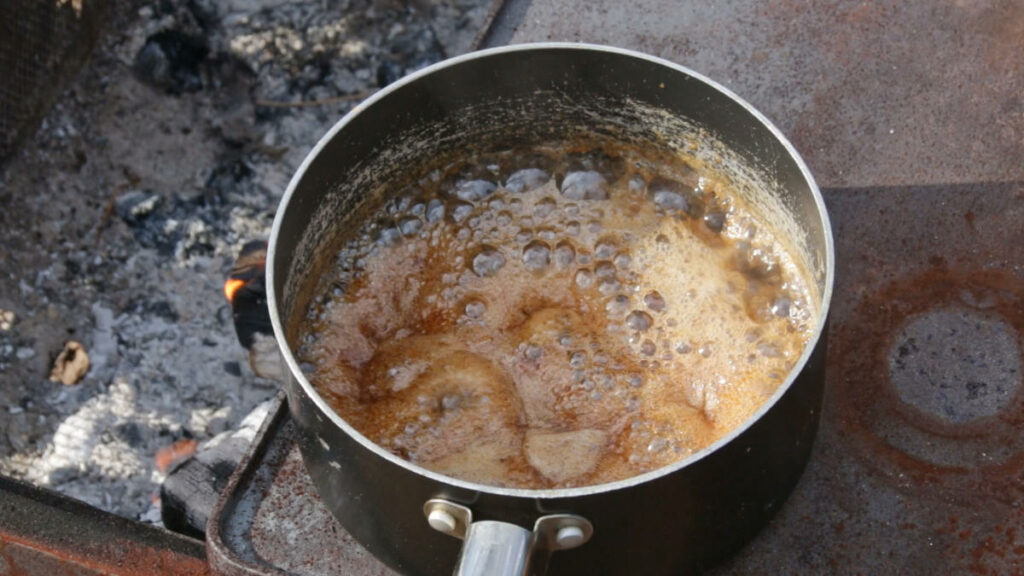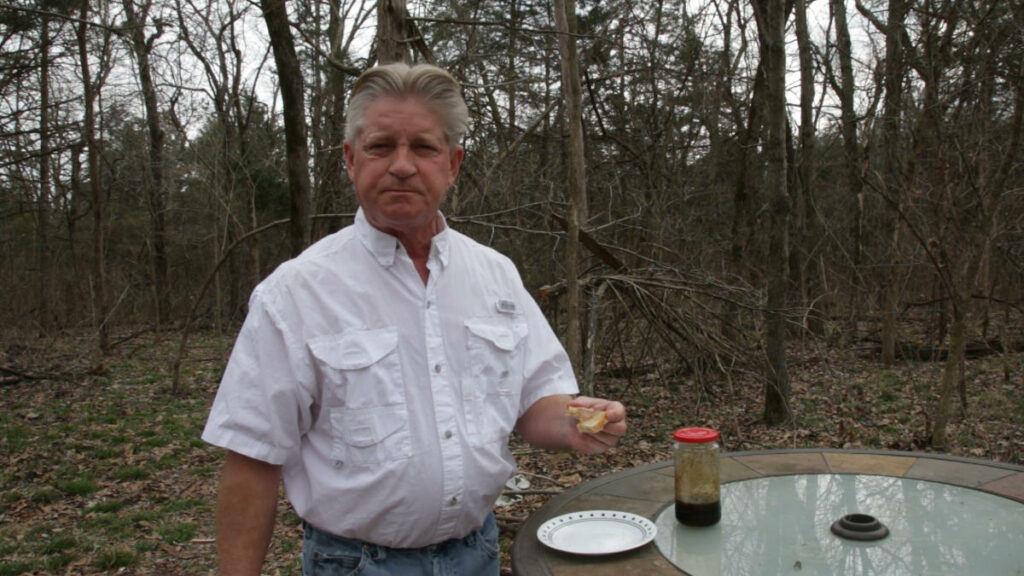If you’re a fan of unique and delicious syrups, then you might want to give making black walnut syrup a try! This rich and flavorful syrup is made from the sap of the black walnut tree, which is collected during Winter and early Spring. Black walnut syrup is a tasty and delectable treat. In this article, we’ll take a closer look at the process of making black walnut syrup and why you might want to try it for yourself. So, whether you’re a foodie or just looking for a unique taste experience, keep reading!
2023 Winter Update
We are making black walnut syrup again this year. We started tapping at the end of December and we are producing a small amount of syrup. As of the beginning of February, we are seeing much better yields this year compared to last year. We are putting the lessons learned last year to good use.
We are selling bottles of our finished Black Walnut Syrup. This is not a flavored syrup but is produced from the sap collected from the black walnut trees on the Lost In The Ozarks property here in the Ozarks.
Read why black walnut syrup is so expensive.
2022
In late winter of this year, we watched a video about tapping black walnut trees to make black walnut syrup. Since it was late in the season we at least wanted to try an experiment to tap black walnuts and see if we could get some syrup. We didn’t want to spend a great deal on supplies until we proved to ourselves we could get enough sap to make black walnut syrup.
Watch the video below, or keep reading, to find out how the experiment worked out and if we were able to produce any syrup.
We ordered 5 metal taps to use in tapping the trees. The first taps we placed weren’t producing a lot of sap. We did some research and discovered that when drilling the tap holes they should be at a slight upward angle into the tree. This has to do with how the sap runs in Maple and Walnut trees.

The sap runs best when the temperatures are below freezing at night, and then rises above freezing during the daytime. The freeze-thaw cycle is what causes the pressure to increase and cause the sap to run so that we can collect it.
We learned about looking for a large root with a large branch above it. We tried this but weren’t able to confirm that this makes a difference. One thing that did make a difference was tapping on the south side of a tree and tapping a tree on the edge of a clearing with the afternoon sun on the southern side. This tree produced many times the amount of sap as the trees further in the woods. On several days when conditions were right this one tree produced many times what all the other trees produced, up to a gallon a day.
You’ll want to store your sap in the refrigerator to prevent spoiling. We lost some sap during the last few days we had the taps in the trees because it warmed into the 60s and the sap turned cloudy and smelled sour. We had to discard that sap, so we knew we were at the end of the season.
We collected sap for about 2 weeks, and then we started to boil down the sap for syrup. I learned it takes a really long time to boil down the sap to make black walnut syrup. The first time I boiled down around 3 gallons of syrup and we ended up with around 8 ozs of a thinner syrup. I was afraid of scorching the syrup since I wasn’t sure if we would get another batch to try this year.
I tried making a double boiler with a crockpot, but it didn’t get hot enough. I then tried using a double boiler on the stove, and it was still taking way too much time. Luckily, I was able to put together another few gallons of sap, and the second time I got much better results.

I poured the sap out of the large pot after it boiled down to fit in a saucepan. I placed that saucepan over the fire pit and boiled it down until it was sticking to a spoon placed in the syrup. That batch had the right consistency. I knew then that I had gotten it right.

The syrup tastes similar to Maple Syrup. It is very sweet but has a light, nutty flavor. It reminds me of black walnut ice cream.

If you have some black walnut trees on your property you might want to try tapping them and making syrup. Watch the video and learn from our experiment. You might find that this syrup is your new favorite syrup. It only makes it better that you are using natural resources to make your own syrup.
Check out more articles and videos about natural living here.
FAQs:
Q: Can you make syrup from black walnut sap?
A: Yes, the sap can be boiled down to make syrup.
Q: Does black walnut sap make good syrup?
A: Yes, the syrup has a distinct flavor that is highly prized by some people.
Q: Can you tap a black walnut tree for syrup?
A: Yes, the trees can be tapped for sap just like maple trees.
Q: How do you process black walnut sap?
A: The process for making the syrup is similar to that of maple syrup. First, the sap is collected from the trees using taps and buckets or tubing. Then, the sap is boiled down to concentrate the sugar and create the syrup.
Q: How much is black walnut syrup worth?
A: The price varies depending on the region and the demand. Generally, it is more expensive than maple syrup due to the smaller yield of sap from black walnut trees.
Q: How many gallons of black walnut sap does it take to make a gallon of syrup?
A: It takes approximately 40 gallons of sap to make one gallon of syrup.
Q: How much is a gallon of walnut syrup?
A: The price varies, but it is generally more expensive than maple syrup. It can cost up to $500 per gallon.
Q: What size black walnut trees to tap for syrup?
A: Trees should be at least 10-12 inches in diameter before they are tapped for sap. This ensures that the tree is mature enough to handle the tapping process without being damaged.